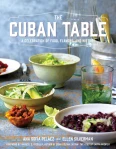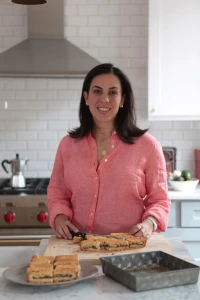
This week I’ve been practicing my Abuela Carmita’s natilla, a traditional custard similar to the Spanish crema catalana. A teacher in Cuba, my sister and I were left with her in the morning to learn Spanish which our parents worried we’d forget. After making us cafe con leche with toast (sliced in thirds and sprinkled with sugar), she would start the natilla early so it would have time to chill. Setting aside the whites to make meringues later, she’d heat the milk and beat the egg yolks. My sister and I would watch her stir, ready to fight over the wooden spoon and the raspa left behind in the still warm pot after she’d poured out the custard into individual blue bowls. Mixing the meringue with my grandfather, they’d piped it into tiny mounds and set them to bake, then he would make lunch while we sat down to our lessons. Lamenting that if we still lived in Cuba we’d be learning French instead, she’d lead us through the letters and rhymes in our silabarios until lunch was ready. When it was finally time for dessert, my grandfather’s bowl would have the cinnamon stick and lime peel (not sure why) while ours had our initials written across the top in cinnamon (which I just realized is almost impossible to do). The crisp meringues would disappear in a puff leaving behind a slightly soft center while the custard was smooth and creamy but held its form. Teaching myself the recipe, I worried that the yolks would scramble and spent almost an hour in my sweltering kitchen stirring one batch over too little heat. Remembering her easy patience, I tried again. Getting it right on my third attempt, I can’t stop going to my refrigerator to look down at the same blue bowls finally full of my grandmother’s natilla. Read more
 For the past few weeks, I’ve been hopping around different countries for Devour. This recipe for sleeping meringues, however, is very close to home. I’d been trying to make my grandparents meringues which were air crisp on the outside and chewy on the inside when my friend Maria Budet shared her own grandmother’s recipe, providing the missing piece that had eluded me. Mystery solved, I added a few toasted almonds and drops of vanilla but am looking forward to many variations in the next year. Thank you all for reading and I hope you’re all enjoying a happy and peaceful Christmas morning!
For the past few weeks, I’ve been hopping around different countries for Devour. This recipe for sleeping meringues, however, is very close to home. I’d been trying to make my grandparents meringues which were air crisp on the outside and chewy on the inside when my friend Maria Budet shared her own grandmother’s recipe, providing the missing piece that had eluded me. Mystery solved, I added a few toasted almonds and drops of vanilla but am looking forward to many variations in the next year. Thank you all for reading and I hope you’re all enjoying a happy and peaceful Christmas morning!













